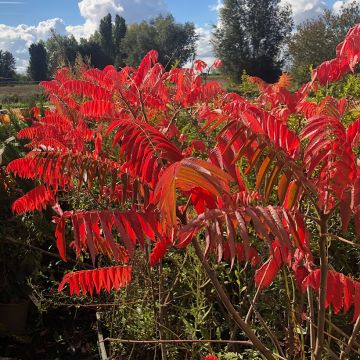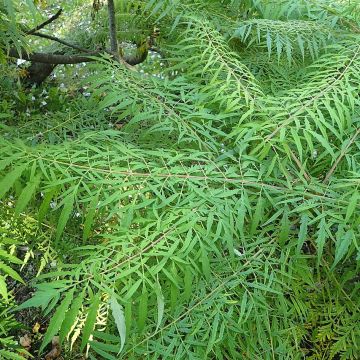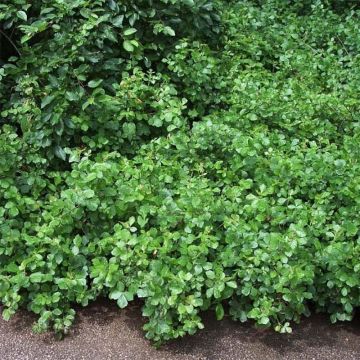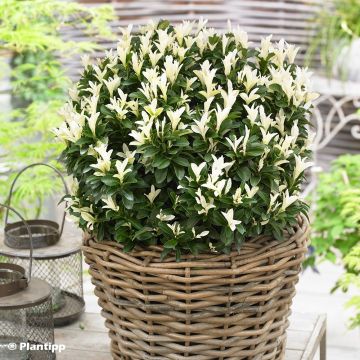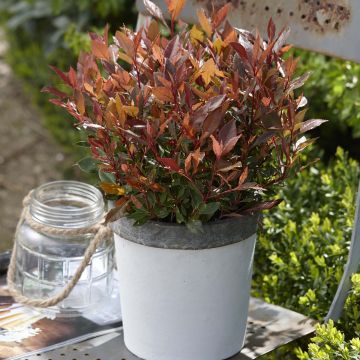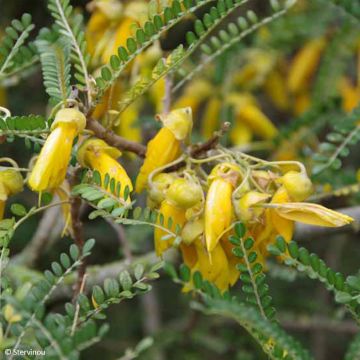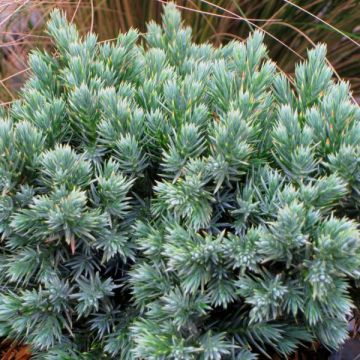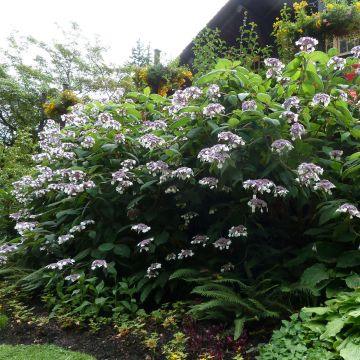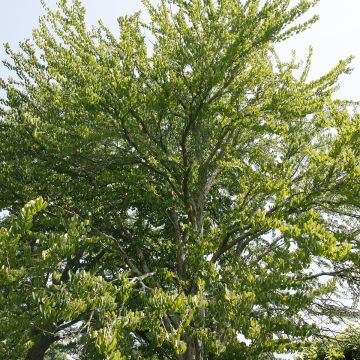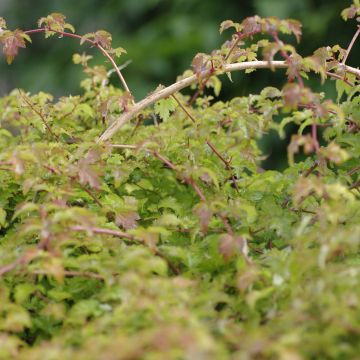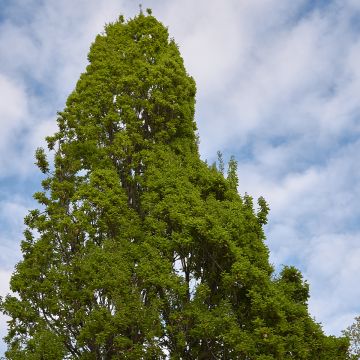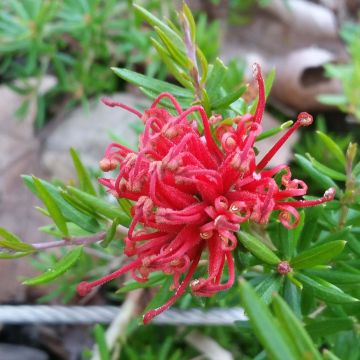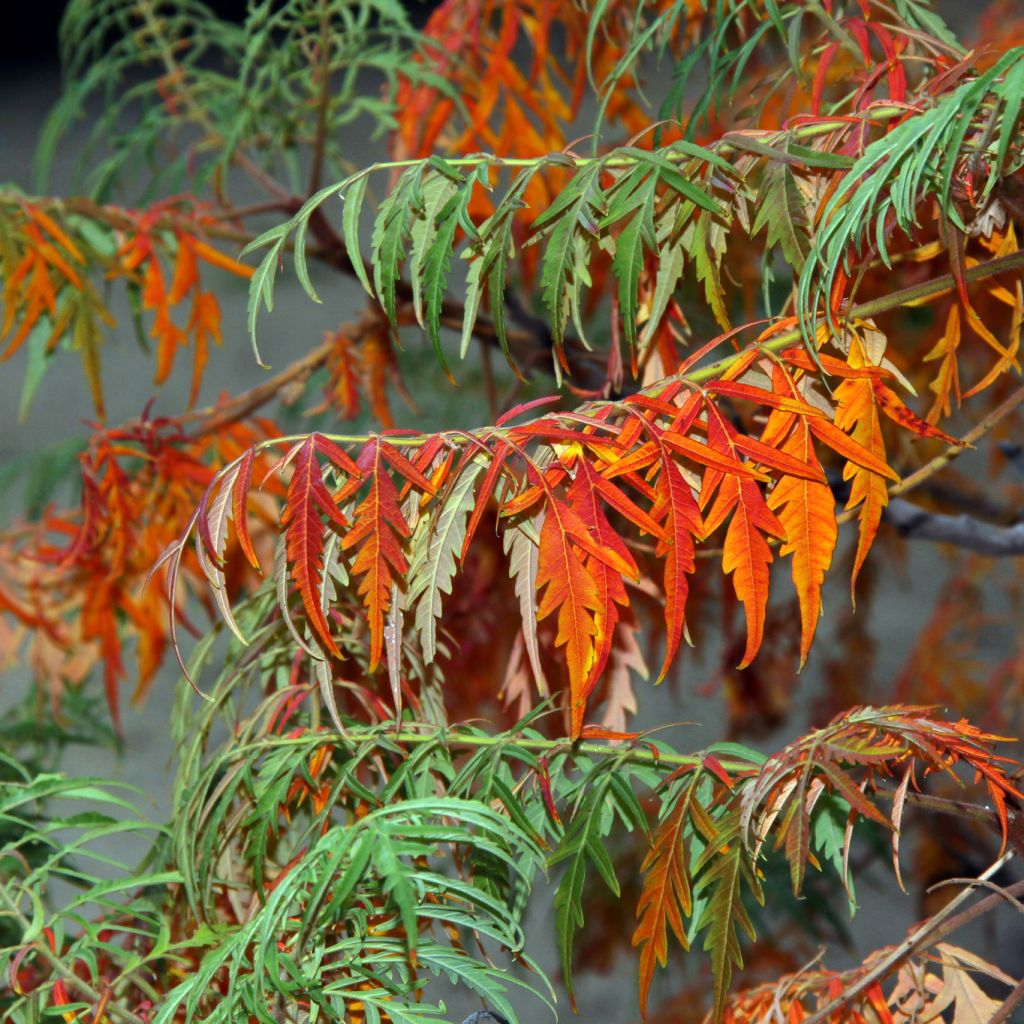

Rhus glabra Laciniata - Fern-leaved Sumach
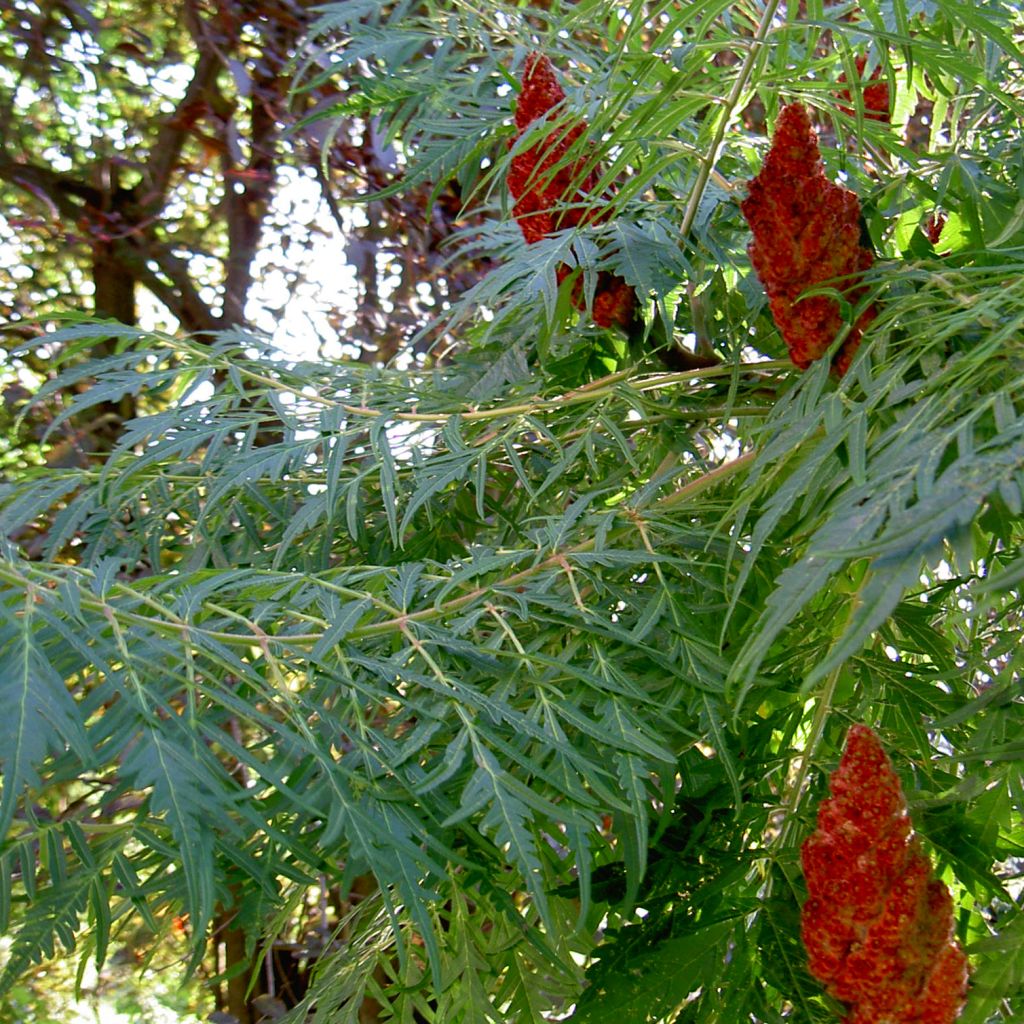

Rhus glabra Laciniata - Fern-leaved Sumach
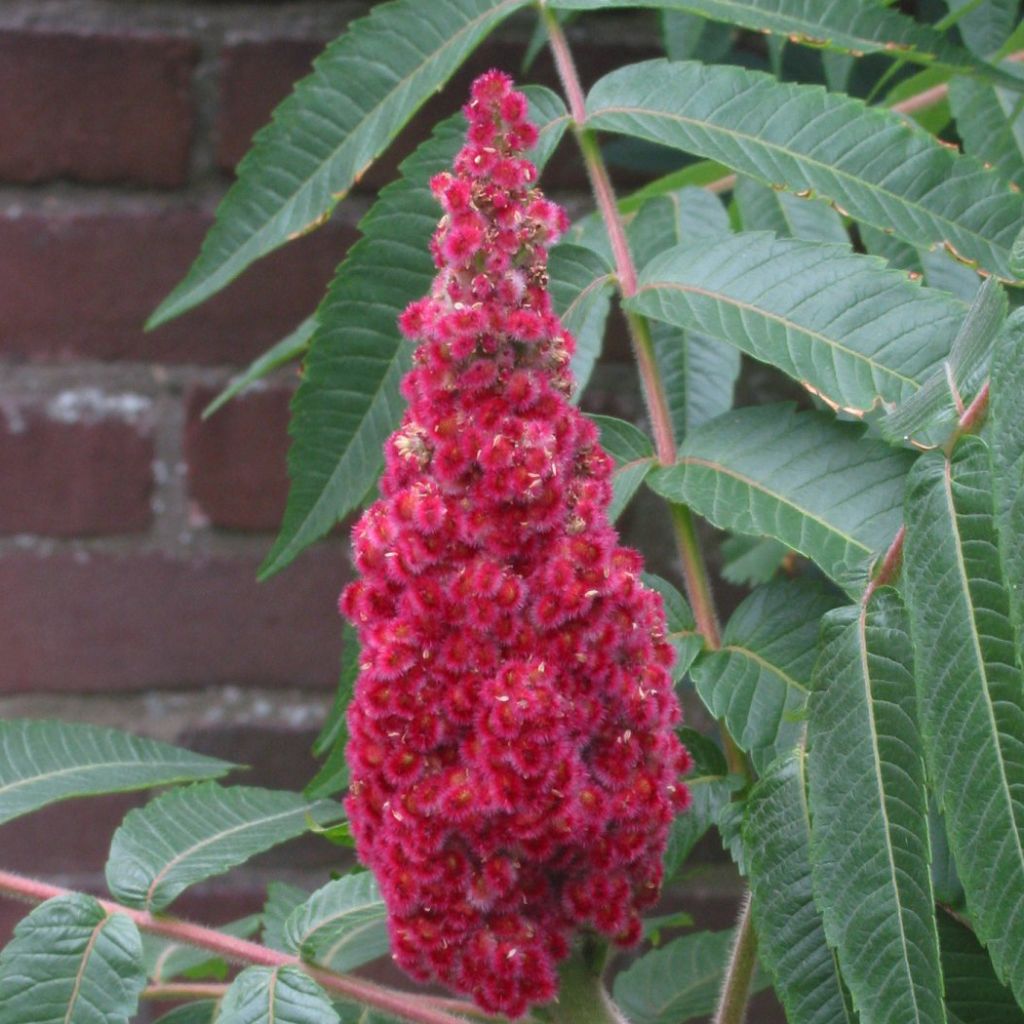

Rhus glabra Laciniata - Fern-leaved Sumach
Rhus glabra Laciniata - Fern-leaved Sumach
Rhus glabra Laciniata
Fern-leaved Sumach, Scarlet Sumach
This item cannot be shipped to the selected country
Delivery charge from €5.90
Delivery to Corse prohibited
More information
Schedule delivery date,
and select date in basket
This plant carries a 24 months recovery warranty
More information
We guarantee the quality of our plants for a full growing cycle, and will replace at our expense any plant that fails to recover under normal climatic and planting conditions.
From €5.90 for pickup delivery and €6.90 for home delivery
Express home delivery from €8.90.
Delivery to Corse prohibited: UE law prohibits the import of this plant from mainland France to Corse as part of the fight against Xylella fastidiosa. Please accept our sincere apologies.
More information

Does this plant fit my garden?
Set up your Plantfit profile →
Description
Rhus glabra 'Laciniata', also known as Cutleaf Smooth Sumac, Smooth Sumac or Vine-Plant, is a bush with long green-blue pinnate leaves divided into dentate leaflets. In autumn, it becomes unique and almost theatrical for two reasons: first, because of the richness of the colours of its foliage, and second, because of its velvety amaranth conical clusters of fruits that persist throughout the winter.
The Smooth Sumac belongs to the family Anacardiaceae and is native to the eastern and western United States (Arizona, Florida to Maine). The growth of this bush is fast and its adult size will not exceed 2.50 to 3 metres in all directions.
The Cutleaf Smooth Sumac has a bushy habit. Its foliage is exceptionally decorative: its pinnate leaves, green-blue and glaucous on the underside, reach 35 to 50cm (13.8 to 19.7in) in length and are divided into lanceolate, dentate, and glossy leaflets. They truly ignite in autumn when gold, orange, crimson, and raspberry red succeed each other and blend in a flamboyant range of colours. The summer flowering (July-August) in the form of greenish conical panicles, 16 to 25cm (6.3 to 9.8in) long, is followed on female trees by intense red drupes, velvety and clustered, 15cm (5.9in) long. The stems are smooth, inermous, red and covered with bloom.
Plant the Rhus glabra 'Laciniata' in any type of soil, even limestone and poor, dry or moist but well-drained soil. It will thrive in partial shade or full sun, but it is commonly accepted that the autumn colours will be more intense with a sunny exposure, the bush should receive at least six hours of direct sunlight per day. A sheltered position from the wind is preferable to preserve the foliage. If not pruned severely enough, this sumac quickly becomes bare at the base and naturally takes on the appearance of a small tree. To maintain a beautiful habit, it may be necessary to remove dead wood or tangled branches. On the other hand, if you want to keep it as a bush, it should be pruned to 50cm (19.7in) from the ground. Pruning should be done before the start of the vegetation (from February to April). Rhus glabra develops trailing roots and naturally suckers. Care should be taken not to damage its roots to avoid accentuating this tendency. It is necessary to monitor the possible appearance of suckers, which can be easily removed.
The Cutleaf Smooth Sumac provides light shade and can shelter a perennial flowerbed with peonies, Brunneras, and can be associated with Scillas, snowdrops, and daffodils for spring, or cyclamens for autumn. It can also be planted as a standalone specimen, creating a changing spectacle by itself. For vibrant backgrounds, it can be associated in a hedge with European spindle tree, Persian Parrotia, smoke trees, or castor oil plants. It is worth noting that its resistance to drought once established, its tolerance to pollution and sea spray, and the hardiness of Rhus glabra 'Laciniata' allow it to be grown in many situations.
Rhus glabra 'Laciniata' carries a toxic milky sap in its branches. It is used in homeopathy but can cause asthma and allergies. The fruits can be macerated in water to obtain a refreshing and acidic beverage (hence its name of vinegar tree).
Report an error about the product description
Rhus glabra Laciniata - Fern-leaved Sumach in pictures
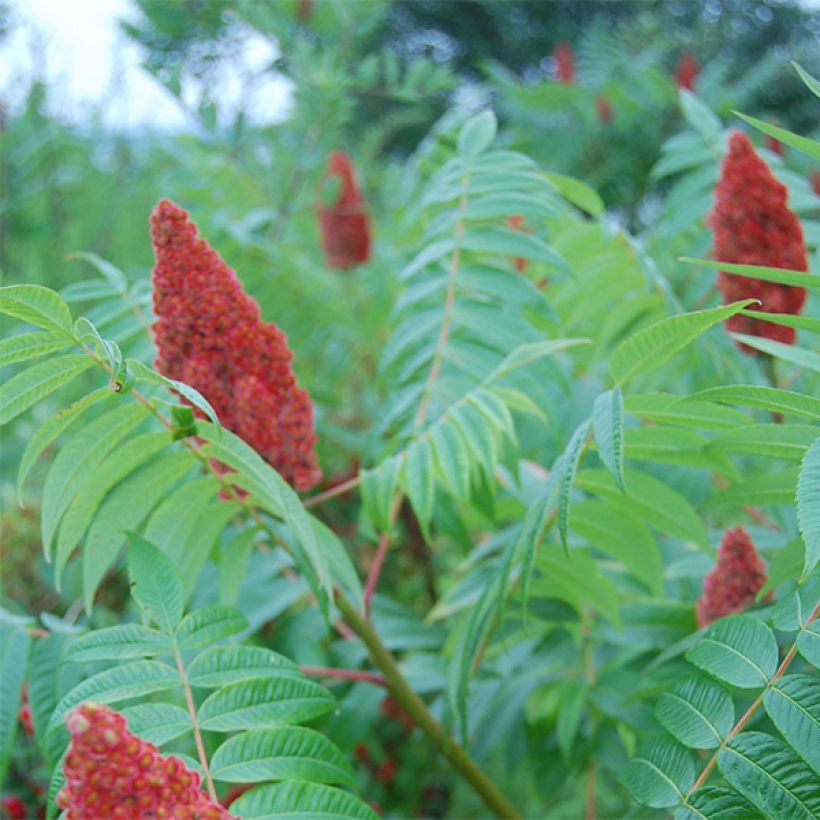

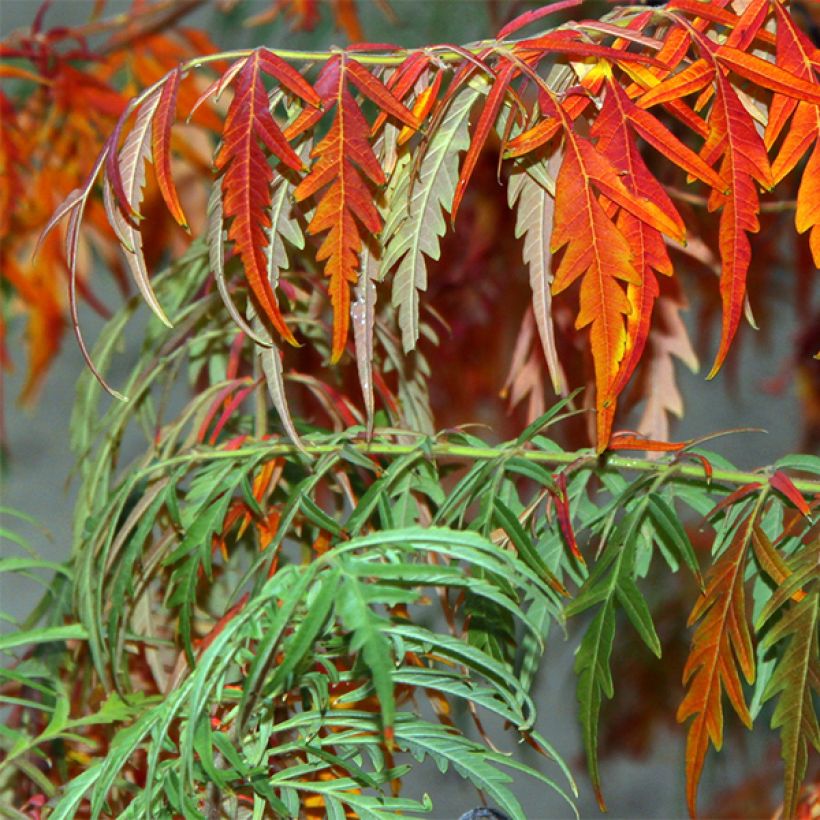

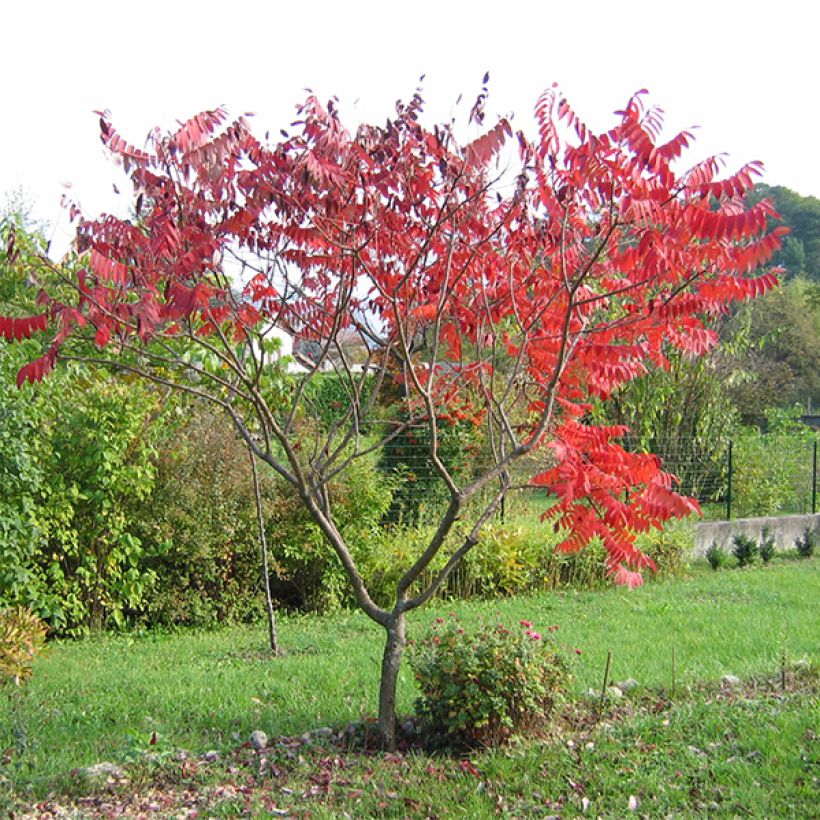

Plant habit
Flowering
Foliage
Botanical data
Rhus
glabra
Laciniata
Anacardiaceae
Fern-leaved Sumach, Scarlet Sumach
Cultivar or hybrid
Other Rhus - Sumac
Planting and care
Plant Rhus glabra 'Laciniata' in any type of soil, even limestone and poor soil, dry or moist but well-drained. It will thrive in partial shade or in full sun, but it is commonly accepted that the autumn colours will be more intense with a sunny exposure, the bush needing at least six hours of direct sunlight per day. A sheltered position from the wind will be preferable to preserve the foliage. If not pruned severely enough, this sumac quickly becomes bare at the base and naturally takes on the appearance of a small tree. To maintain a beautiful habit, it may be necessary to remove dead wood or tangled branches. On the other hand, if you wish to make it a bush, it will need to be pruned to 50cm (19.7in) from the ground. Pruning should be done in all cases before the start of vegetation (from February to April). The Rhus glabra develops running roots and naturally suckers. It is important to avoid damaging its roots in order not to accentuate this tendency.
Planting period
Intended location
Care
-
, onOrder confirmed
Reply from on Promesse de fleurs
Striking foliage shrubs
Haven't found what you were looking for?
Hardiness is the lowest winter temperature a plant can endure without suffering serious damage or even dying. However, hardiness is affected by location (a sheltered area, such as a patio), protection (winter cover) and soil type (hardiness is improved by well-drained soil).

Photo Sharing Terms & Conditions
In order to encourage gardeners to interact and share their experiences, Promesse de fleurs offers various media enabling content to be uploaded onto its Site - in particular via the ‘Photo sharing’ module.
The User agrees to refrain from:
- Posting any content that is illegal, prejudicial, insulting, racist, inciteful to hatred, revisionist, contrary to public decency, that infringes on privacy or on the privacy rights of third parties, in particular the publicity rights of persons and goods, intellectual property rights, or the right to privacy.
- Submitting content on behalf of a third party;
- Impersonate the identity of a third party and/or publish any personal information about a third party;
In general, the User undertakes to refrain from any unethical behaviour.
All Content (in particular text, comments, files, images, photos, videos, creative works, etc.), which may be subject to property or intellectual property rights, image or other private rights, shall remain the property of the User, subject to the limited rights granted by the terms of the licence granted by Promesse de fleurs as stated below. Users are at liberty to publish or not to publish such Content on the Site, notably via the ‘Photo Sharing’ facility, and accept that this Content shall be made public and freely accessible, notably on the Internet.
Users further acknowledge, undertake to have ,and guarantee that they hold all necessary rights and permissions to publish such material on the Site, in particular with regard to the legislation in force pertaining to any privacy, property, intellectual property, image, or contractual rights, or rights of any other nature. By publishing such Content on the Site, Users acknowledge accepting full liability as publishers of the Content within the meaning of the law, and grant Promesse de fleurs, free of charge, an inclusive, worldwide licence for the said Content for the entire duration of its publication, including all reproduction, representation, up/downloading, displaying, performing, transmission, and storage rights.
Users also grant permission for their name to be linked to the Content and accept that this link may not always be made available.
By engaging in posting material, Users consent to their Content becoming automatically accessible on the Internet, in particular on other sites and/or blogs and/or web pages of the Promesse de fleurs site, including in particular social pages and the Promesse de fleurs catalogue.
Users may secure the removal of entrusted content free of charge by issuing a simple request via our contact form.
The flowering period indicated on our website applies to countries and regions located in USDA zone 8 (France, the United Kingdom, Ireland, the Netherlands, etc.)
It will vary according to where you live:
- In zones 9 to 10 (Italy, Spain, Greece, etc.), flowering will occur about 2 to 4 weeks earlier.
- In zones 6 to 7 (Germany, Poland, Slovenia, and lower mountainous regions), flowering will be delayed by 2 to 3 weeks.
- In zone 5 (Central Europe, Scandinavia), blooming will be delayed by 3 to 5 weeks.
In temperate climates, pruning of spring-flowering shrubs (forsythia, spireas, etc.) should be done just after flowering.
Pruning of summer-flowering shrubs (Indian Lilac, Perovskia, etc.) can be done in winter or spring.
In cold regions as well as with frost-sensitive plants, avoid pruning too early when severe frosts may still occur.
The planting period indicated on our website applies to countries and regions located in USDA zone 8 (France, United Kingdom, Ireland, Netherlands).
It will vary according to where you live:
- In Mediterranean zones (Marseille, Madrid, Milan, etc.), autumn and winter are the best planting periods.
- In continental zones (Strasbourg, Munich, Vienna, etc.), delay planting by 2 to 3 weeks in spring and bring it forward by 2 to 4 weeks in autumn.
- In mountainous regions (the Alps, Pyrenees, Carpathians, etc.), it is best to plant in late spring (May-June) or late summer (August-September).
The harvesting period indicated on our website applies to countries and regions in USDA zone 8 (France, England, Ireland, the Netherlands).
In colder areas (Scandinavia, Poland, Austria...) fruit and vegetable harvests are likely to be delayed by 3-4 weeks.
In warmer areas (Italy, Spain, Greece, etc.), harvesting will probably take place earlier, depending on weather conditions.
The sowing periods indicated on our website apply to countries and regions within USDA Zone 8 (France, UK, Ireland, Netherlands).
In colder areas (Scandinavia, Poland, Austria...), delay any outdoor sowing by 3-4 weeks, or sow under glass.
In warmer climes (Italy, Spain, Greece, etc.), bring outdoor sowing forward by a few weeks.

































